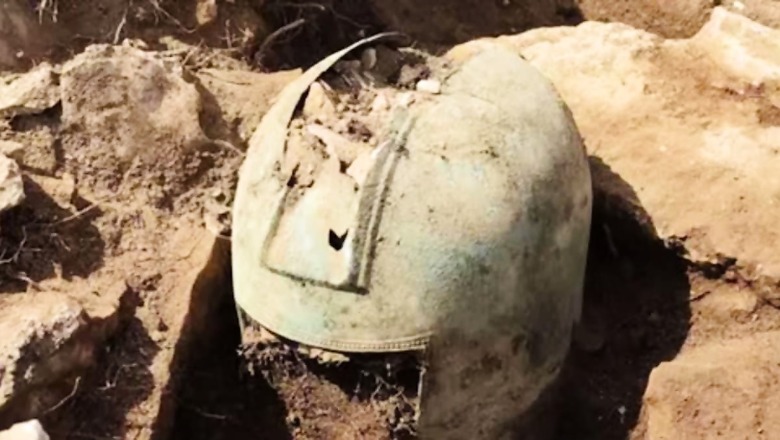
views
The history of our world is a fascinating yet mysterious topic of the subject, one that reveals the secrets of our ancient world, giving us a glimpse of what was or what could have been. Researchers have discovered a 2,500-year-old helmet made of metal, which is believed to be used in a cult practice.
As per the reports of the Live Science website, the helmet was discovered in Croatia within an Illyrian burial mound. It is believed to be an offering in a cult practice. The ancient artefact was found encased in a stone structure inside a burial mount at the Gomile archaeological site.
According to Hrvoje Potrebica, an archaeology professor at the University of Zagreb and the excavation’s leader, it occurred between the 4th to the end of the 6th century BC. More reports state that the Gomile site consists of several burial mounds and is situated near the Zakotorac village, located close to the Adriatic Sea. Potrebica further stated, “Each mound contains multiple graves and each grave contains multiple burials.”
The ancient Greek records mention a community of people known as the Illyrians, who are believed to have lived in the region during the same era as the ancient helmet. As per more information, the Illyrians lived in different tribes and even had kingdoms, however, the Romans conquered them through many wars happening between 229 and 168 BC.
The conservation process for the helmet is still awaited but Potrebica is positive that it “seems to be in perfect condition”. The archaeologists found the helmet attached to a stone structure, separated from the other graves in the burial mound. Because of that, it is believed to be a “votive offering to deceased ancestors or part of some cult practice related to the whole mound and not [a] particular individual or a grave,” said Potrebica.
Domagoj Perkić, a member of the excavation team said that if it was used in a battle, it might have affected the enemy psychologically. He said, “Just try to imagine a warrior with a shiny helmet on his head, in the sun, on the eve of a battle…that moment alone causes awe in the enemy.”



















Comments
0 comment